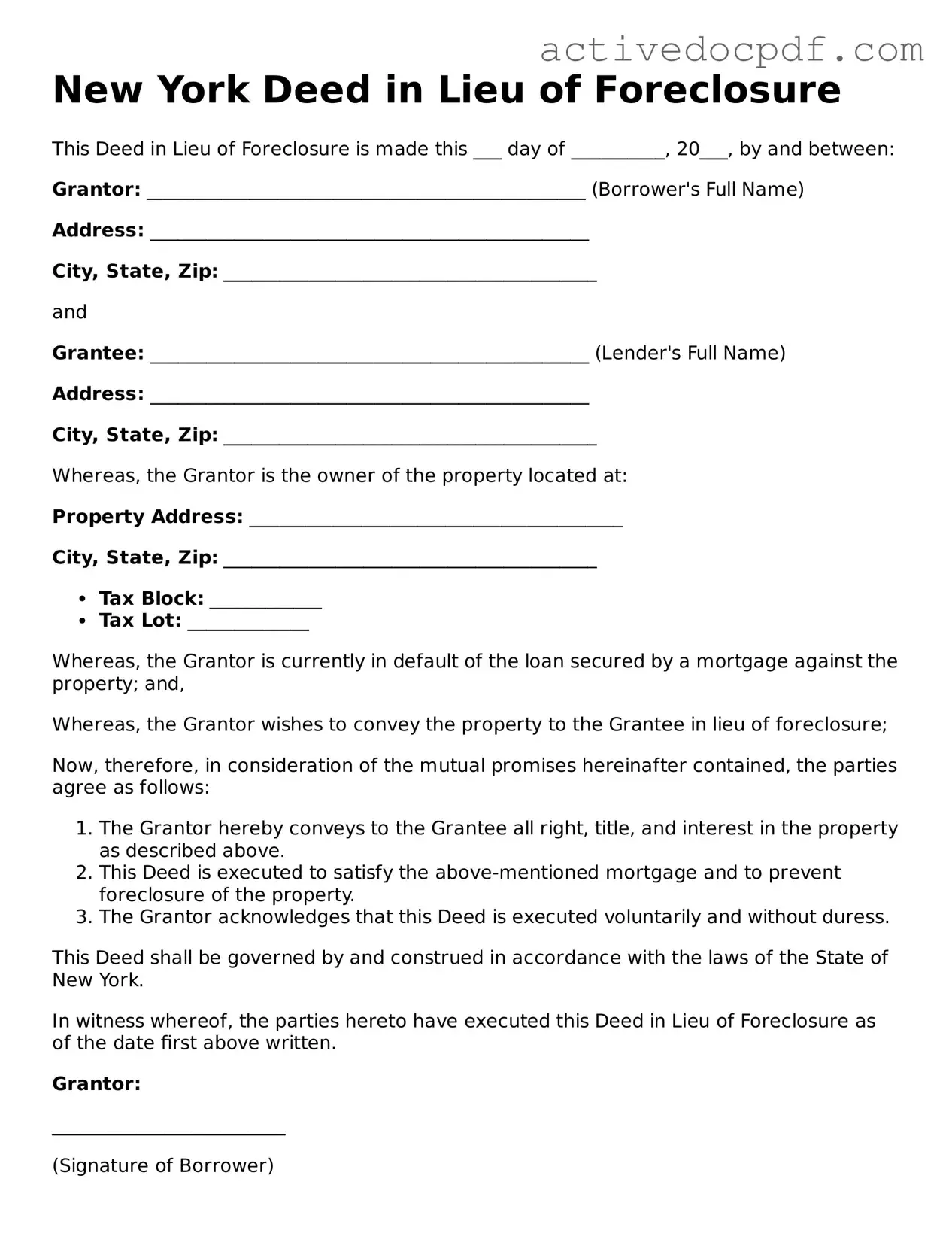Guide to Filling Out New York Deed in Lieu of Foreclosure
Once you have decided to fill out the New York Deed in Lieu of Foreclosure form, you’ll need to gather some important information. Completing this form correctly is essential for a smooth process. After filling it out, you'll typically need to submit it to the appropriate parties involved in your mortgage agreement.
- Obtain the form: Download the New York Deed in Lieu of Foreclosure form from a reliable source or request a copy from your lender.
- Read the instructions: Familiarize yourself with any specific instructions that accompany the form. Understanding the requirements will help you fill it out accurately.
- Fill in your information: Start with your name and address as the borrower. Ensure that the details match those on your mortgage documents.
- Property details: Provide the full address of the property involved in the foreclosure process. This includes the street address, city, state, and zip code.
- Lender information: Enter the name and address of your lender or mortgage company. This is the entity you are working with regarding the deed in lieu of foreclosure.
- Sign the form: After reviewing all the information, sign the form. Your signature indicates your agreement to the terms outlined in the document.
- Notarization: Have the form notarized. This step is often required to ensure the document is legally binding.
- Submit the form: Send the completed and notarized form to your lender. Keep a copy for your records.
After submitting the form, you may need to follow up with your lender to confirm they have received it and to understand any next steps in the process. Staying engaged will help ensure everything proceeds smoothly.
